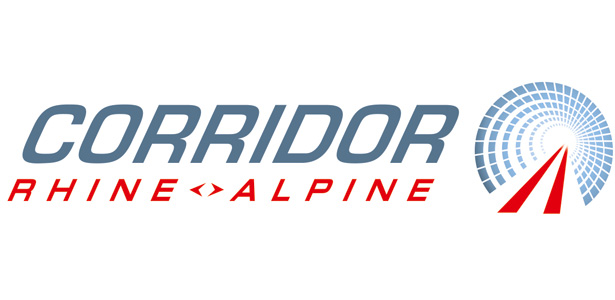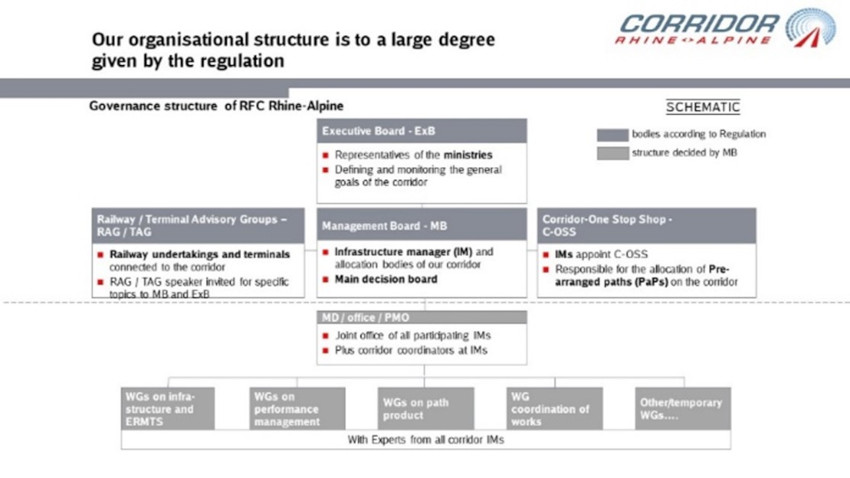Between 2017 and 2018, the Rhine-Alpine Corridor was instrumental in the drafting of the Handbook for International Contingency Management (ICM), later adopted by all other Corridors.
As this is a very traffic-intensive corridor with an already very large rail modal share, the increase of which is therefore challenging, the Rhine-Alpine Corridor has taken a number of measures to improve the quality of the international service with the aim of further enhancing the attractiveness of rail transport.
In this respect, the following initiatives are of particular importance:
- Improved Capacity Offer (ICO) project carried out in 2019, aimed at improving the Corridor’s range of commercial services, which contributed, among other things, to the creation of the international catalogue of harmonised paths between Italy and Switzerland;
- Series of punctuality workshops hosted as of 2019 with strong involvement of companies, terminals and logistics operators aimed at identifying shared actions to improve international rail freight punctuality.
It is also worth mentioning the market study carried out by the Rhine-Alpine Corridor in 2018 to analyse potential changes in demand in relation to an increase in the weight of the permissible towable mass of trains, an increase in commercial speed and the reliability of the transport.
One of the most interesting conclusions of the aforementioned study is to highlight the positive impact that regularity (with particular reference to punctuality) has on modal shift also in view of the strong presence of combined traffic, especially in the southern part of the corridor.
In September 2020, the 15.4-kilometre-long Ceneri Base Tunnel (Switzerland) was officially opened as the southward continuation of the Gotthard Base Tunnel. With the completion of this work, freight traffic will benefit from increased capacity, efficiency, faster connections and greater competitiveness compared to road on the north-south axis.
As a sign of the Rhine-Alpine Corridor's focus on initiatives aimed at improving railway performance, in 2021 the Management Board conducted a feasibility study on the applicability to the railway sector of the cooperation model adopted among the various stakeholders in the aviation sector called “Rail Collaborative Decision Making” (R-CDM). Specifically, this model, used by the EUROCONTROL platform, is mainly aimed at improving the performance of the sector through greater transparency, collaboration and sharing of operational information between all actors involved in the air transport chain.
In November 2023, the regular strategic meeting of the CEOs of the Rhine-Alpine Corridor was held in Madrid (NA). During the meeting, the issue of the impact that the European Commission's new capacity management proposal may have on the organisation of the Rhine-Alpine Corridor was addressed, also in view of the planned repeal of Regulation 913/2010 (which established the freight corridors in 2013) in 2023. The senior management of the various Infrastructure Managers believes that the advanced level of international cooperation achieved on issues not strictly related to capacity management (management of international disruptions, relations with railway companies and terminals, cooperation with ministries, projects to facilitate cross-border interoperability, etc.), with a specific geographic focus, is an asset of great added value that must not be wasted. The conclusions of the meeting were therefore the following: maximum support for corridor staff in this regulatory transition period and a commitment to identify a form of cooperation post-2030 along the lines of the current freight corridors.

